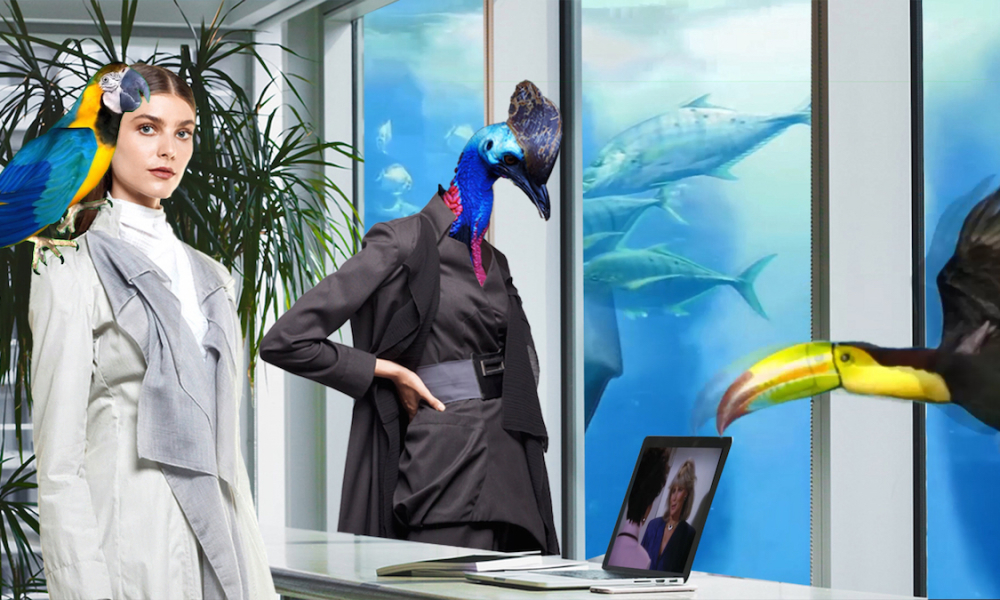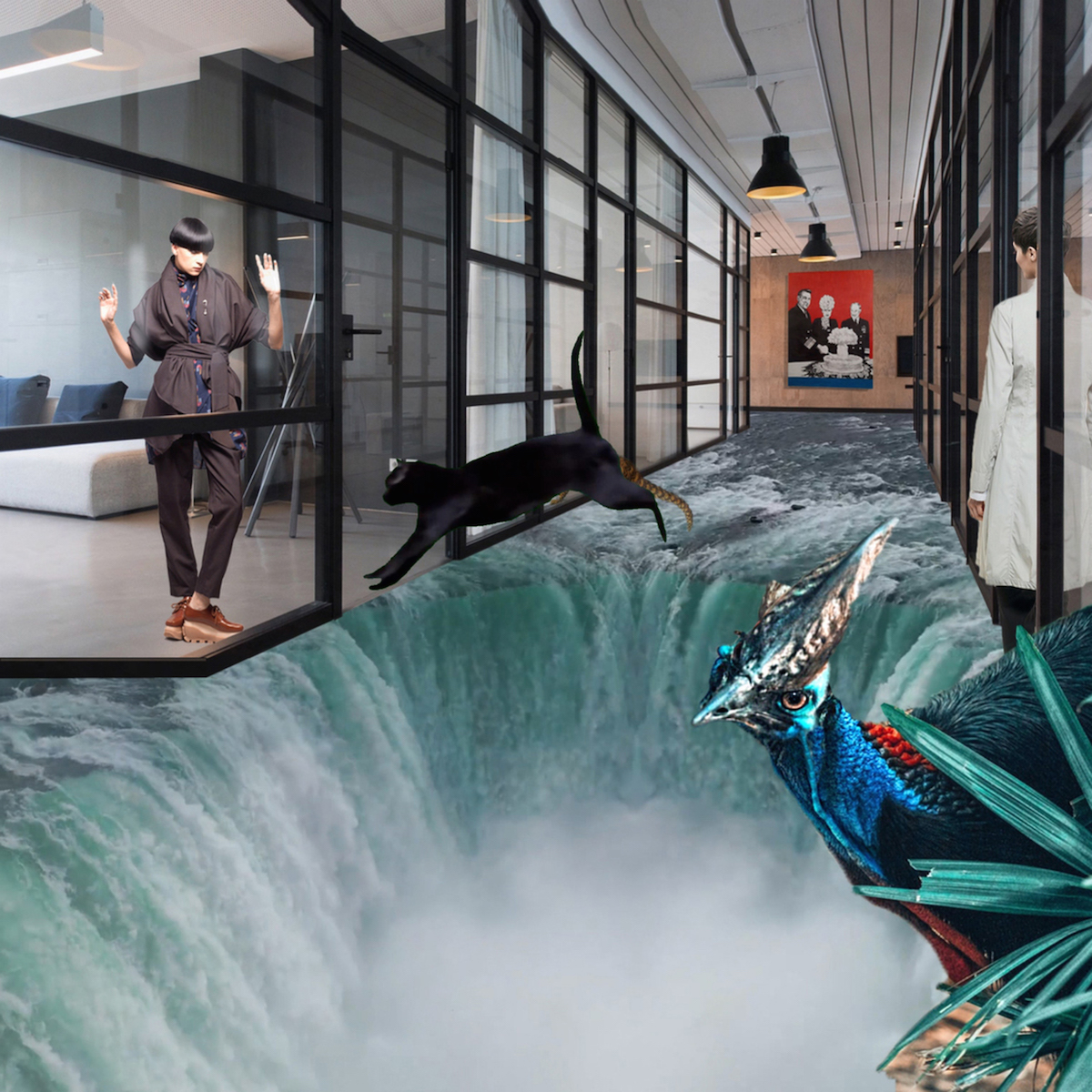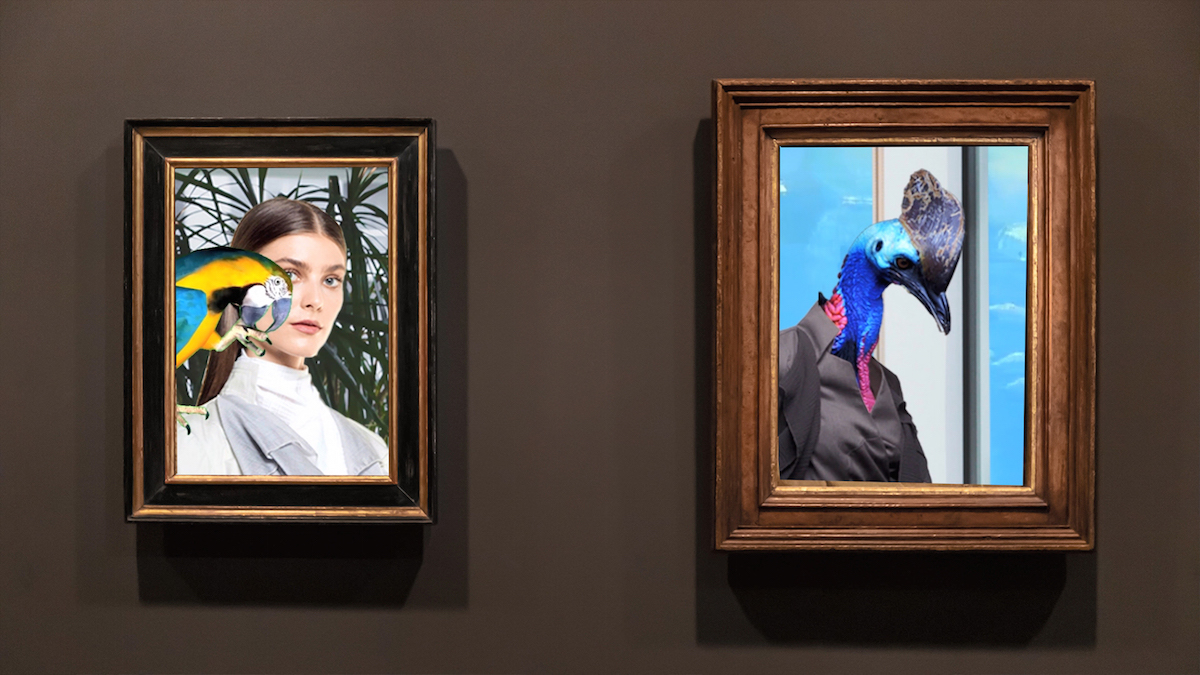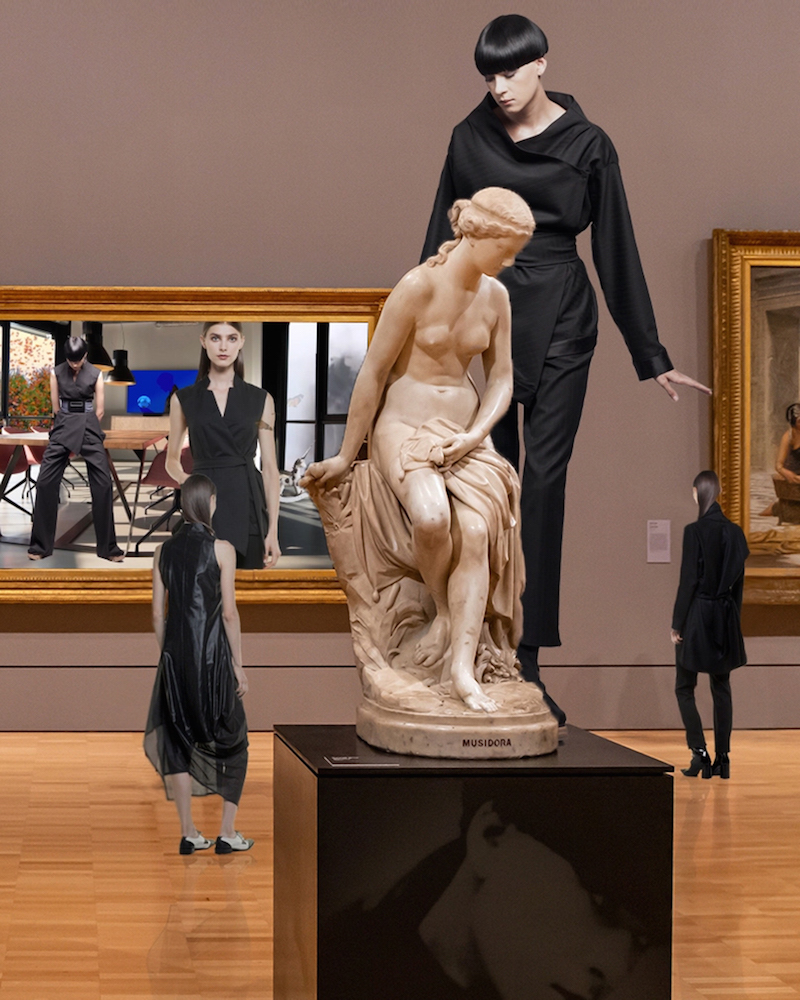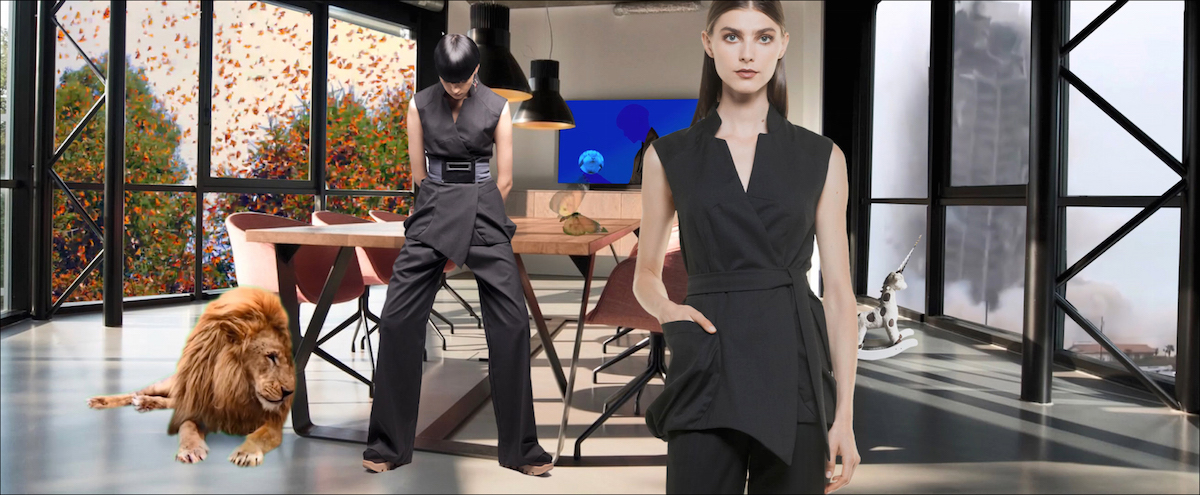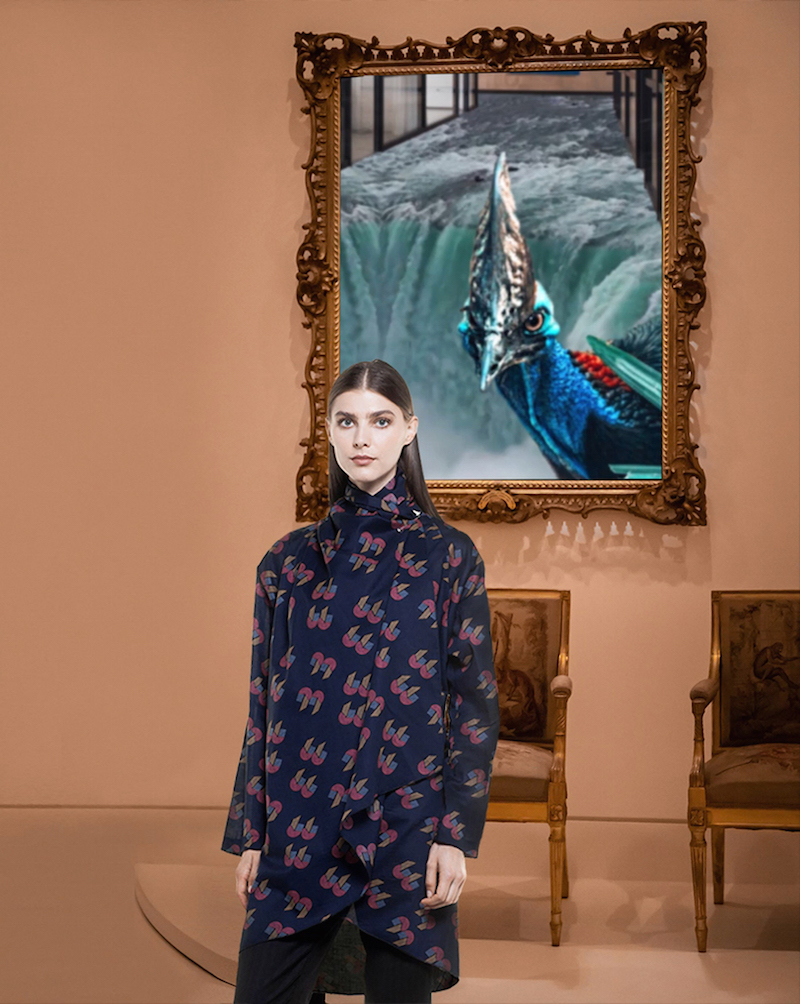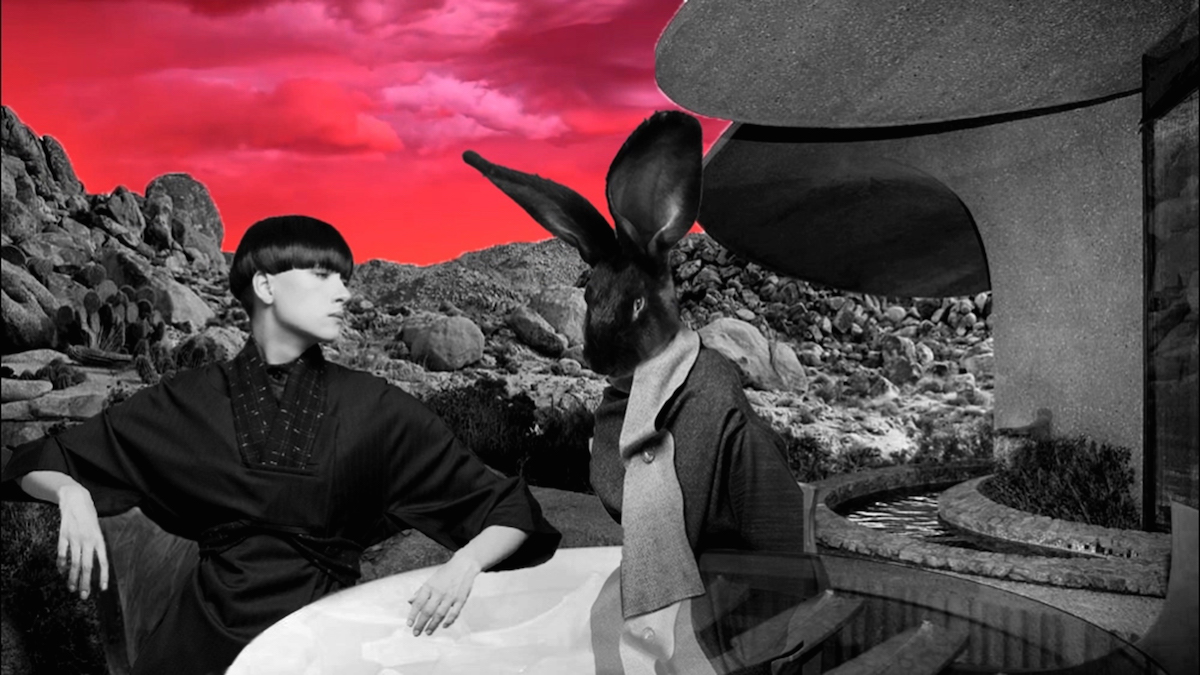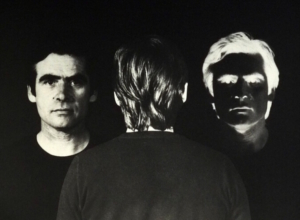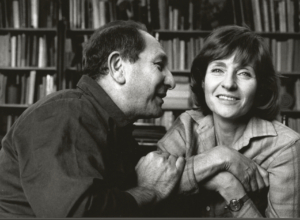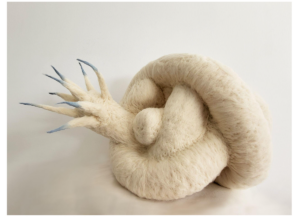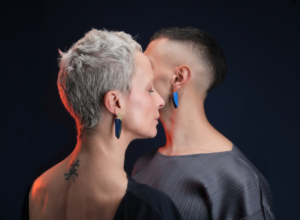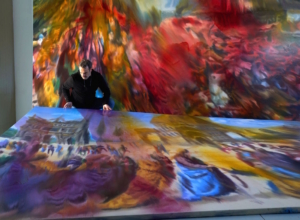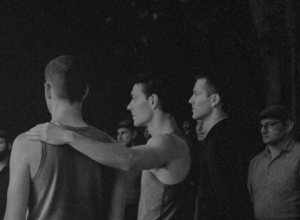Vasilis P. Karouk è un artista visivo greco la cui pratica è caratterizzata dalla versatilità e dalla contaminazione dei mezzi espressivi. Dopo aver studiato pittura all’Accademia di Belle Arti di Atene, si appassiona all’animazione, interesse che aveva fin da bambino, e inizia a sperimentare video e film. Espone la sua prima installazione video nel 2003, come parte della sua tesi di laurea, insieme a tutti i suoi dipinti. Dopo la laurea, consegue un Master in Filosofia (MPhil) e in Forme dell’Arte Digitale immergendosi nel mondo delle immagini movimento. Approfondisce anche lo studio del cinema, compreso quello sperimentale, traendo ispirazione dal movimento espressionista tedesco. Completa gli studi indagando il tema delle restrizioni imposte dal medium nell’arte, riflettendo su come l’artista possa usare il mezzo espressivo spingendosi fino al suo limite, assimilandolo in una visione artistica in cui il mezzo si fa portatore piuttosto che dittatore del risultato estetico.
Vasilis P. Karouk is a Greek visual artist whose practice is characterized by the versatility and the contamination of the means of expressions. He studied painting in the Athens School of Fine Arts, where he got involved in animation, something that interested him since he was a child. He started experimenting with video and film and exhibited his first video installation piece in 2003 as part of his dissertation show, along with all his paintings. After I graduated, he continued his studies with a Master in Philosophy (MPhil) and in Digital Forms of Art, developing his knowledge of digital imagery and really diving into moving image, either animated or filmed. He advanced his knowhow regarding cinema and progressive film, while he was inspired by the German expressionistic movement in cinema. He completed his final written thesis on the restrictions imposed by the medium in art. I contemplated on how the creative individual (the artist) can use their medium up to the point of its limitations and assimilate them in an artistic vision, where the medium is just a carrier rather than a dictator of the aesthetic outcome.
Vasilis P. Karouk, Wonderland FW19-20 collection by Elisavet Kapogianni, video still
Francesca Interlenghi: Come descriveresti il tuo approccio e le tue attitudini? Puoi dirmi di più sul tuo processo creativo?
Vasilis P. Karouk: Mi è sempre piaciuto giustapporre le mie immagini in movimento ai miei quadri. I miei ultimi lavori video sono come dipinti in movimento, o fotografie, si potrebbe dire, in cui la narrazione si incarna nella struttura interna dell’immagine in movimento. Non c’è una sequenza lineare di immagini che forma uno scenario. Le parti in movimento, in queste animazioni filmiche come mi piace chiamarle, possono essere filmati reali o filmati creati graficamente o fotografie o qualsiasi altro tipo di immagine o un mix di tutti questi elementi insieme. Sono anche molto interessato al modo in cui i videogiochi determinano, manipolandolo, il comportamento del giocatore immerso nello spazio e nel tempo digitale. Pensando allo spettatore come a un giocatore, tendo a incorporare nei miei video le strutture e l’estetica essenziale dei videogiochi: la nozione di tempo infinito, il movimento del soggetto nello spazio e la circolarità della narrazione. Tutti questi erano erano elementi validi per lavorare alla campagna di Elisavet Kapogianni. Abbiamo deciso che le immagini della collezione “Wonderland” non dovessero essere realizzate su sfondo fisso così da consentirne un’elaborazione grafica ottimale in post-produzione.
Vasilis P. Karouk, Wonderland FW19-20 collection by Elisavet Kapogianni, video still
Francesca Interlenghi: How would you describe your approach and attitudes? Can you tell me more about your process of working?
Vasilis P. Karouk: I always loved juxtaposing my moving images, with my paintings. I approach my latest video work as moving paintings, or photographs if you may, where the narration is embodied in the inner structure of the moving image, rather than being a linear sequence of images that forms a scenario. The moving parts, in these filmic animations, as I like to call them, may be of real footage, graphically created ones, photographs, any type of image, or a mix of all. I am also very interested on the way video games manipulate and heighten the anticipation of the player, while he is navigating through the narration of the game in digital space and time. In order to gain that extra anticipation of a viewer (rather than a player), I tend to incorporate in my video work essential structures and aesthetics of videogames in my videos, such as, infinite time, subjective movement in space and circular narration. All these were a good foundation for working on Elisavet Kapogianni’s campaign. We decided that the photoshoot for her Wonderland campaign should be done in such a manner (stripped of a fixed background narration), that would allow optimal graphical processing in post-production. We also agreed to take animated footage along with the photo shooting, so they can be blended in new video material. All the above resulted in creating moving images that fussed photography with graphics and video footage.
Vasilis P. Karouk, Wonderland FW19-20 collection by Elisavet Kapogianni, video still
Francesca: Hai sviluppato un vocabolario visivo distinto che attinge da una grande varietà di temi, tra cui visioni oniriche e surreali (mi riferisco alla collezione Wonderland). Cosa ti ispira di più?
Vasilis: La collezione “Wonderland” si ispira al celebre racconto di Lewis Carroll “Alice nel paese delle meraviglie”. Elisavet ha visto, sullo sfondo onirico di questo racconto, un parallelismo con l’ambiente misterioso e oscuro in cui vive la donna contemporanea. Una collezione che è come un’avventura sartoriale per una moderna Alice: impavida, vigorosa e avventurosa. Da questi elementi ho tratto ispirazione per il mio lavoro, accettando la sfida di comunicare e presentare al meglio i valori del suo marchio e della moda in generale. Gli elementi surreali e onirici sono venuti in modo del tutto naturale, dandomi massima libertà espressiva e permettendomi di fare diverse oscillazioni avanti e indietro tra fiaba e realtà. Ne è risultata una giocosa sperimentazione a beneficio della comunicazione.
Vasilis P. Karouk, Wonderland FW19-20 collection by Elisavet Kapogianni, video still
Francesca: You have developed a distinct visual vocabulary that draws upon a wide variety of themes including oneiric and surreal visions (I’m referring to Wonderland collection). What inspires you the most?
Vasilis: “Wonderland” collection is inspired by the classic tale of “Alice’s adventures in wonderland”, by Lewis Carroll. Elisavet saw in this tale’s oneiric backdrop, a parallel with the strange and obscure environment within which the contemporary woman is venturing. She created her collection as a sartorial adventure for the modern woman, who navigates herself in her absurd social, professional and fashion landscape; and like Alice is fearless, vigorous and adventurous (like Alice). These concepts, were the core of my inspiration, while working on Wonderland collection. But they also presented a key for us, on how to approach the challenge of communicating and presenting her brand values and fashion in general. Surreal and oneiric elements occurred quite naturally, as they sprung out of the theme at hand. The surrealistic theme inspired me and presented a solid ground to create freely, enabling me to incorporate different transitions from fairytale to reality and vice versa. Correspondingly, it allowed playful experimentation on how to communicate the underling ideas behind the collection.
Vasilis P. Karouk, Wonderland FW19-20 collection by Elisavet Kapogianni, video still
Francesca: Come sta cambiando la fotografia? Sta andando nella direzione di un utilizzo sempre maggiore della tecnologia? Penso in particolare alla produzione di video e ai fashion film.
Vasilis: È abbastanza ovvio che l’immagine fotografica sta rapidamente cedendo il passo in favore dell’immagine in movimento, soprattutto per quanto riguarda l’industria della moda e del design. Il rapido sviluppo della tecnologia, attraverso le piattaforme di social media che fungono sempre più da mercato digitale per l’utente online, ha creato un grande bisogno di immagini e contenuti. La fotografia è attualmente disponibile a basso costo per chiunque nel mondo occidentale, sia per chi ne vuole fruire sia per chi la vuole realizzare. Ciò ha generato un flusso enorme di immagini ma allo stesso tempo anche un pubblico più saturo ed esigente la cui attenzione si è ora spostata sull’immagine in movimento. Sebbene non sia una novità nel settore della moda, questa modalità espressiva sta guadagnando terreno e sta diventando il mezzo d’elezione per raccontare la storia di un marchio. I principali brand focalizzano la loro attenzione sui fashion film, i documentari e gli editoriali video. La sperimentazione si sta spostando verso una combinazione più grafica di immagini animate creando così un linguaggio visivo più ricco. In una storia di moda la narrazione riveste un ruolo centrale. Certo, la fotografia può assolvere molto bene a questa funzione narrativa ma l’immagine in movimento – fotografia più tempo e moto nello spazio – è un mezzo molto più efficace per catturare l’essenza di un oggetto in movimento e tridimensionale come un abito. Se è vero che l’universo dell’immagine in movimento è potenzialmente infinito, è altrettanto vero che già è possibile assistere ad alcune presentazioni virtuali di collezioni e l’evoluzione potrebbe essere ancora maggiore. Al punto che, io credo, la fotografia reinventerà di nuovo il suo ruolo.
Vasilis P. Karouk, Wonderland FW19-20 collection by Elisavet Kapogianni, video still
Francesca: How is the photography changing? Does it indicate the increasing use of the new technology (videos for instance and fashion movies)?
Vasilis: It is quite obvious that the photographic image is rapidly giving away space in favor of moving image, especially regarding the commercial, fashion and design industry. The rapid development of technology in hardware and software, channeled through social media platforms that increasingly act as a digital market for the online user, have created a ravenous need for imagery and content. Photography is currently available for everyone in the western world to both consume and create at a very low cost. This has generated a huge amount of photo imagery flowing, but also a more saturated and demanding audience whose attention is now intrigued through moving image. Although not new in the fashion industry, the moving image is gaining ground as the preferred medium to visualize brand narrative. Leading fashion brands, increasingly trust into it for envisioning their content, with fashion movies, documentaries and video editorials. On one hand the majority of the fashion industry produces brief fashion video-clips. On the other the progressive ones are quickly moving towards a more graphic combination of animated image creating a richer visual language. The main reason that the moving image is gaining ground, is that fashion always unfolds in a story and subsequently, narration is of the most importance. Of course, photography can very well create narration, but moving image is photography plus time and movement in space, thus is a much more effective medium in capturing the essence of a 3-dimensional moving object such as garments. And while the moving image landscape seems almost infinite, for the time being, we already see some virtual reality presentations of collections and the landscape may soon get even bigger. So much bigger, that my guess is that photography will reinvent its place again, as it is after all, the basis for all of these mediums.
Cover story: Vasilis P. Karouk, Wonderland FW19-20 collection by Elisavet Kapogianni,video still
Contact: Vasilis P. Karouk – Instagram, Facebook


